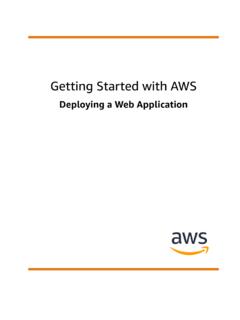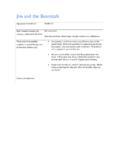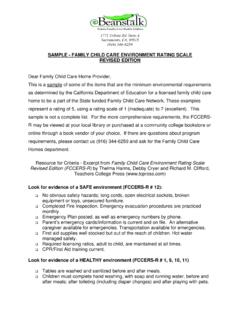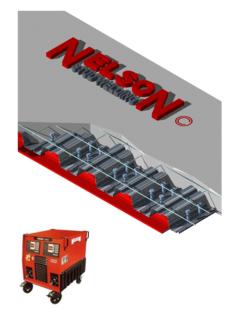Transcription of Safety, Accidents and the Current Zipline Craze
1 safety , Accidents and the Current Zipline CrazeHow can you tell if a Zipline canopy tour or adventure park is safe?By Mike FischesserAugust 24, 2010 First of all, the information below in no way means that ziplines built by professional companies other than Beanstalk Journeys are unsafe. Many of our good friends in the adventure education industry design, build and train differently from Beanstalk Journeys. As you visit numerous zip courses around the world, you will see a wide variety of designs and safety practices. At the time of this writing, the Association for Challenge Course Technology, The American Society for Testing and Materials and ANSI do not require builders to use poles, engineers, lightning protection, certified arborists, increment borings of trees, full body harnesses, two attachment points to the zip cable, half inch cable or larger, etc.
2 Unfortunately there are some unprofessional Zipline building companies that use fancy certification wording and credentials but are not building safely. Several of these professional companies have had their work rebuilt a year or two after they left. As a Zipline guest or a potential buyer of a zip course, you should do some investigative homework and ask some tough questions so you can avoid an accident or spending a lot of money on a course only to be disappointed and having to rebuild it later. As an example of unprofessionalism, one of these companies, who is building a lot of courses was using malleable cable clamps, which the adventure education industry banned 20 years ago because that cheap, hardware-store clamp has a bad safety record of failing.
3 Imagine building a Zipline and using cable clamps that are known to break. Backyard zip builders are popping up all over the place. DO YOUR Beanstalk Journeys we feel strongly that the following design, build and safety practices must be built in to every Beanstalk project:1 Link to Mike Fischesser's Beanstalk Builders WebsiteFull Body HarnessesA full body harness is best for accommodating guests who come in all shapes and sizes. If a pulley jams or a guest doesn t fully arrive on a zip, they may have to hang for a while before being rescued. A full body harness is more comfortable and supportive and will lessen the possibility of the harness hang syndrome in a long hanging situation where serious medical problems can arise from restricting blood flow (usually in the case of an unconscious participant).
4 A full body harness significantly increases the safety margin in the case of staff and guest who might invert and fall out of a harness due to improper positioning. Any harness (full body or sit harness) must always have the waist belt above the iliac crest (hip bones). Unfortunately, a lot of staff and guests think it is un-cool to pull the waist belt up that high and they wear the waist belt below the hipbones, which can cause it to completely slip off in an invert situation. This unsafe practice probably comes from the whole low rider pants movement. Crazy!Every Beanstalk guide and guest is required to use a really nice Singing Rock, full body harness with front and rear attachment rings as well as side rings for guides to clip guests in at BrakingHand braking is when staff and guests control their zip speed with their own hand(s) on the cable behind the pulley(s).
5 Hand braking is fun and typically safe. Unfortunately, the occasional guest (and a recent serious injury with a builder) may not do the procedure correctly and slam into the pole, tree or cliff at the far end. There are various backup techniques being used to address this situation, but we have yet to see one that everyone agrees is the best. Most professional builders and designers are using hand braking and it is absolutely an awesome technique on the longer zips (greater than 200 feet), when done correctly. The question is: As a designer/owner, if you know that someone may eventually get hurt, because of the hand braking accident stories (and they are out there, but often not reported to the designer builders) is that acceptable?
6 At Beanstalk we say, No. If you know a safety procedure occasionally results in serious Accidents , then it is not a good procedure nor is it acceptable. Hand braking is similar to teaching a novice to belay. You would never trust a novice to belay after one quick demo and two practices, especially when a person may be anxious about zipping and not thinking clearly. Beanstalk designs aim for nice Tinkerbell-type landings or a safe braking system that staff in Pulleys, Dislocations, Finger PinchThere are numerous accident stories out there of people s hair becoming entangled in the moving pulley wheels because their head and helmet (some companies are not using them, which is unacceptable) are too close to the cable. Hand braking requires that the participant be close enough to the cable to reach it, therefore long hair is a concern.
7 If someone is scared and over grips the cable to slow down during hand braking, it can result in injury to the shoulder assembly or a complete dislocation. Even though they are taught not to, sometimes a guest will grab the cable in front of the moving pulley and receive lacerations (on an ungloved hand) to the fingers. Beanstalk designs have the participants hanging well below the pulleys to avoid these vs. TreesTrees are wonderful to build treehouses and zip decks in. However, it is very difficult to guarantee the health and safety of a key tree. Beanstalk always uses a certified consulting arborist (not simply a tree worker) when building in trees. But it is still extremely difficult for our arborist to prove that there are no large, hollow cavities inside the tree.
8 Hollow cavities are typically caused by ant colonies, decay or past trauma. In the old days, many builders, including ourselves, didn t worry too much about tree safety because we weren t putting tremendous focus on trees in the case of ropes courses, but now zip builders are putting high compression loads (large decks and 10+ people) and huge lateral loads on trees (1,000 + cables). Unfortunately, it appears that the mindset has not changed from ropes course/single participant trees to ziplines/huge load situations on trees. We are often shocked to see some of the species (poplars, dying hemlocks, red oaks, etc.) and small diameters (less than 12 ) that are being used. We use a $6,000 Bosch Resistograph with a graph paper read-out to assess the health and history of a tree, but we have never done this at 12 intervals to prove to ourselves that no dangerous hollow cavities existed.
9 Therefore, we primarily use two certified, Class 1, treated poles to support all treehouses and zips (which, admittedly is overkill, but we like it. What if a single pole had a weak point and failed?) This allows our engineer to be able to calculate loads better and lessens the cost of arborist safety visits over the years as well as worries of ice, wind or insect DiameterThe old standard was 3/8 diameter, 7x19 strand, GAC, but now, most professional companies are using diameter or greater, as does Beanstalk. It is stronger, lasts longer and more ProtectionWe have been using lightning protection systems on structures over 30 feet in height since 1989. We wish everyone would. It makes our industry look more professional. Why not err towards more safety instead of less?
10 We use it to protect the structures, not so much the people, hopefully they are being lowered to the ground at the FIRST sign of lightning or safety ReportEvery outdoor adventure education organization, private or public, should have an Annual safety Report prepared for in-house safety management, their insurance company and available to the public upon request. The report should include a general narrative summarizing the safety findings from the year, as well as, statistics and narratives on Near Misses, Incidents and Accidents . Of course learning from Accidents is critical for organizational safety management . The goal of every organization should be ZERO Accidents , incidents and near misses.







